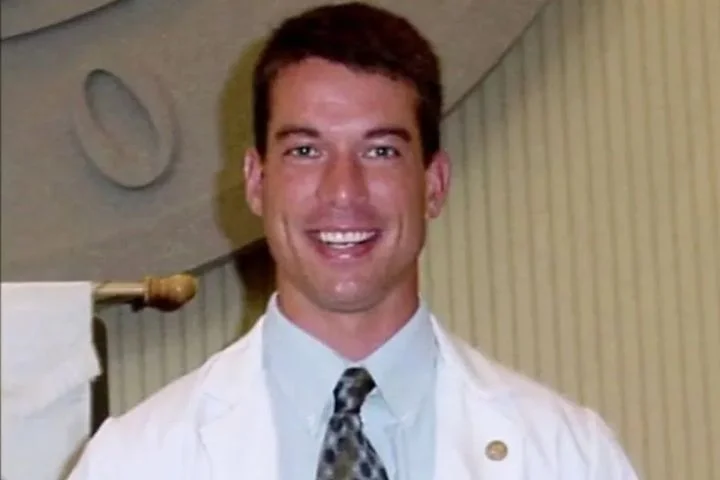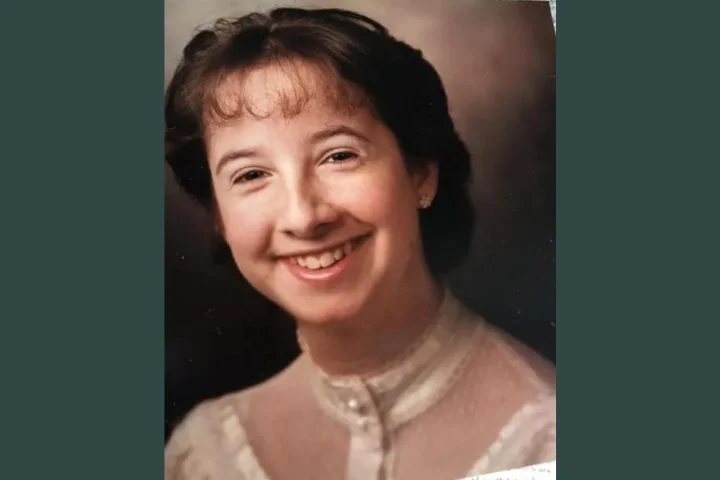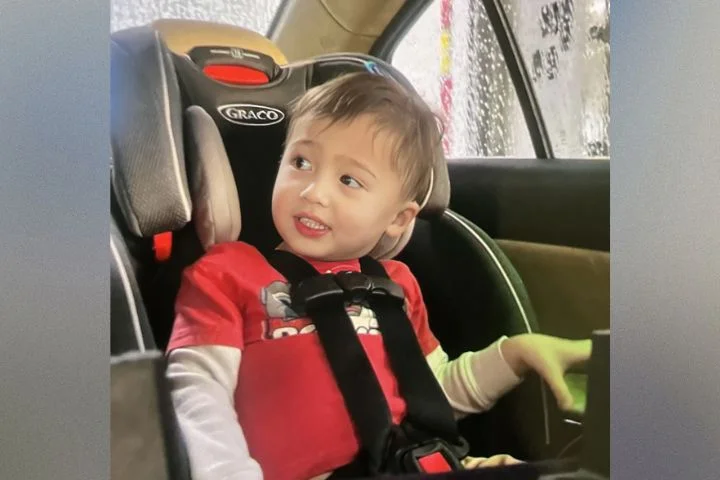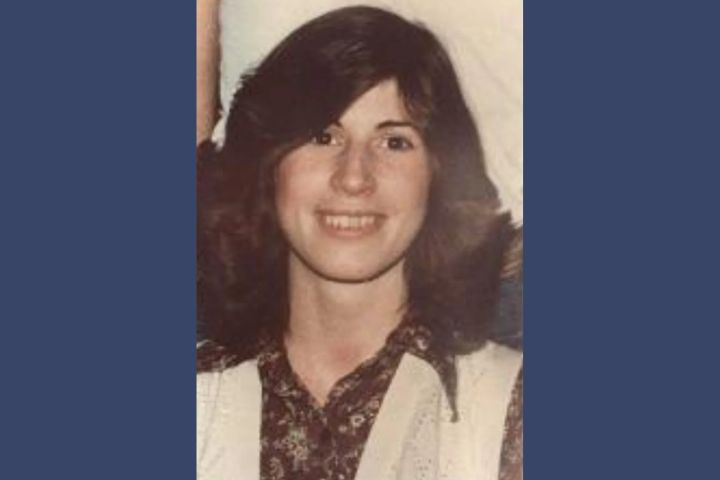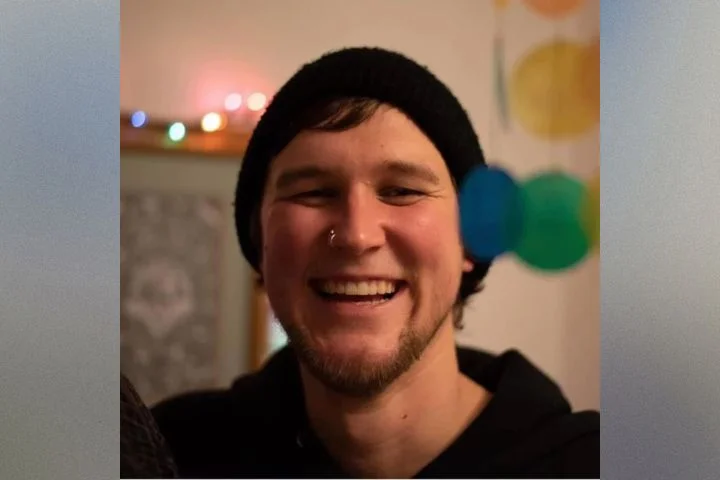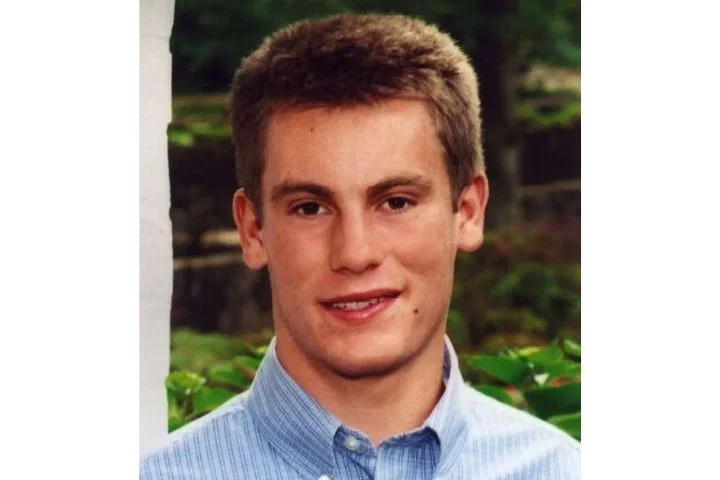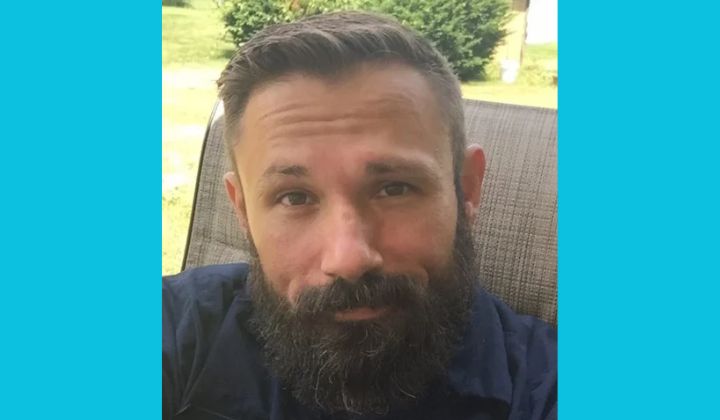March 31, 2006 was a Friday, and the first night of spring break for the Ohio State University community. All the bars and restaurants near campus were packed. Brian Shaffer, a 27-year-old medical student, was one of the many students who headed out to celebrate the end of the quarter. He and his friend, Clint Florence, began their night at the Ugly Tuna Saloona, in the South Campus Gateway complex. Known for terrible service but decent entertainment and alcohol, it attracted many OSU students due to its convenient location. Many nights, students would be packed shoulder-to-shoulder throughout the room, taking advantage of cheap drink specials and live music.
Brian had an apartment on King Avenue, about a half mile southwest of the South Campus Gateway. It was only a 10-minute walk, so he left his car at home that Friday night and met up with his friend Clint around 9:15pm at the Ugly Tuna Saloona. They stayed there for about two hours, then walked to the North Shore Tavern and had a couple drinks there. Around 11:40pm, they walked to Brothers Bar and Grill, where they ran into Clint’s friend Meredith Reed. After a couple shots, they decided to end the night in the same place they started it, at the Ugly Tuna. The trio was caught on surveillance camera walking across the courtyard and headed for the Ugly Tuna. At 1:15am they can be seen on the escalator heading up to the bar.
At 1:55am, Brian is seen on surveillance stepping out of the bar and talking to two women Clint was acquainted with, Amber Ruic and Brighton Zatko. They can be seen having a short conversation near the top of the escalator, then Brian headed back toward the bar and the women left.
Last call at the Ugly Tuna was at 2:00am, but the bar was open until 2:30am to give patrons time to finish up their drinks before leaving. Clint and Meredith finished their drinks and got ready to leave, but were unable to find Brian. They stood around for a few minutes, watching as the crowded bar emptied out, there was still no sign of him. The bar only had one room, and Brian definitely wasn’t in it. The only other place he could be was the bathroom, but Clint checked it and he wasn’t there, either. Figuring he had somehow slipped past them and was waiting outside, they headed out of the bar. The two of them can be seen on surveillance footage at 2:09am, riding the escalator down to the street level while trying to call Brian on his cell phone. All calls went straight to voicemail. After a few tries, Meredith left a short message, asking “Where the hell are you?” It was a question many more people would ask in the coming days, because Brian was never seen again.
Alexis Waggoner, Brian’s girlfriend, was the first person to suspect something was wrong. Like Brian, she was a second-year medical student at OSU, but she hadn’t gone out to celebrate the end of the quarter like he did. Instead, she left right after classes ended to make the drive to her hometown of Toledo. Elly, her beloved family dog, wasn’t doing well and she wanted to be able to say goodbye to her. She planned to return to Columbus on Sunday, and she and Brian were scheduled to fly to Miami on Monday. Brian had bought the tickets months ago, and they were looking forward to spending some time in the Florida sun. Brian had hinted to friends and family that he was going to be proposing to Alexis in Miami, and he was quite excited about it. Alexis tried to call Brian early Saturday afternoon to update him on Elly, but her call went straight to voicemail. She wasn’t particularly concerned at first; she knew he had been out drinking the night before and figured he was simply sleeping off the late night. When she couldn’t reach him that evening, she began to worry. By midnight, she was starting to panic.
Randy Shaffer last saw his son early Friday evening, when the two of them met for dinner at an Outback Steakhouse in Reynoldsburg, about 20 minutes away from campus. Brian told his dad that he was excited about going out with some friends that night to celebrate the fact that exams were over. Randy noticed that Brian looked exhausted after several all-night study sessions that week, and didn’t think going out drinking was a good idea. He kept his opinion to himself, though; Brian — and the rest of his family — hadn’t had many reasons to celebrate lately. Just 25 days earlier, Brian’s mom had lost her battle with a rare form of bone cancer.
Alexis called Randy on Sunday with the news that none of Brian’s friends had seen him since Friday night. When Randy told her that Brian had not shown up for his planned visit on Saturday, Alexis knew there was definitely something wrong. She was still in Toledo, but decided to head back to Columbus immediately. The two-and-a-half-hour drive between her home and campus seemed to take much longer than it had when she made it on Friday.
The apartment Alexis shared with her younger brother was close to Brian’s; all she had to do was look out her back door and she could see his. Once back in Columbus, she bypassed her apartment and went straight to Brian’s. Unlocking the door, she did a quick walkthrough and confirmed that he wasn’t there. The apartment looked neat and orderly like it usually did, and nothing appeared to be missing. His cell phone charger was still plugged into the wall, and his eyeglasses were in the spot on the bookshelf where he normally kept them. The fact that these items were in the apartment made Alexis worry even more. If Brian had planned on going somewhere for any length of time, he would have taken them with him. Wherever he was, he hadn’t driven himself, as his Honda Accord was still parked in its usual spot. Unsure of what she should do, Alexis planted herself on the couch and stared at the door, praying for Brian to come through it. The door did open eventually, but it wasn’t Brian. It was his brother, Derek, who had gotten a call from his father asking him to check on his brother.
Derek last spoke to Brian early Friday evening. Brian had called to see if Derek wanted to meet up with him that night for a few drinks, but Derek already had plans. He was taking his girlfriend to a show at a Columbus comedy club, but told Brian he might be able to meet up with him when it was over. By the time the show had finished, though, both Derek and his girlfriend were tired and just wanted to go home. Now he wondered if he was going to regret his decision to not catch up with him Friday night.
Randy’s next-door neighbor was a police detective, and she warned Randy that police likely weren’t going to do anything until Brian had been out of contact for at least 48 hours, so Randy was somewhat prepared for the lackadaisical response when he reported Brian missing. However, he certainly wasn’t going to sit around and wait for police to do something; Randy, Derek, Alexis, and Randy’s neighbor began their own search early Sunday evening. After talking to Clint, they knew that Brian’s last confirmed location was the Ugly Tuna Saloona, so they decided to start there. They looked through the bar and some of the other businesses in the area, checked in dumpsters, and spoke to people on the street. They called all the hospitals in the area and even checked with the county jail. Hours later, they still had no idea where Brian was, but they were pretty sure he wasn’t in the immediate area. Deflated, the group gave up the search for the night.
No one slept well that night. There was a sense of anticipation as Brian’s family and friends waited to see if he would show up in time to catch the plane to Miami. When he didn’t, everyone knew the situation was dire. Brian had been so excited about the trip, there was no way he would voluntarily miss it. Randy, Derek, and Alexis had missing person flyers printed and began plastering the OSU campus with them.
Detectives didn’t have much to go on. There was no activity on Brian’s credit cards or cell phone, and his car and other personal belongings were untouched. But the fact that he had gone missing in Columbus meant detectives had one thing going for them: numerous surveillance cameras. It was impossible to go far in the city without being captured by at least one of them. They obtained the video from the cameras at the Ugly Tuna first. While there were no cameras inside the bar, there were two right outside at the top of the escalator. At the very least, they would be able to see if Brian was alone or with someone when he left the bar.
As they watched the video, investigators were able to confirm much of what Clint and Meredith told them. They saw all three of them leave the parking garage, cross the courtyard, and take the escalator up to the bar at 1:15am. At 1:55am, they saw Brian walk out of the bar and have a short conversation with two women that were standing right outside the doors, then he turned around and went back into the bar alone. Then, at 2:09am, Meredith and Clint could be seen leaving the bar and getting on the escalator. Eventually, the entire bar emptied out and the lights went off, but Brian never appeared. Figuring they must have missed him, the investigators replayed the video starting from the point where Brian went back into the bar at 1:55am. They slowed the video down and scrutinized each person who came out. Once again, they saw no sign of Brian.
Before they went over the surveillance tape, there wasn’t anything that set his case apart from any of the other missing adult cases across the country. The fact that he seemingly went into a bar and never came out launched the case into national news. It’s been a mainstay on unsolved mystery websites for years, and everyone seems to have a different opinion on what happened that night. Rumors started to fly almost immediately after Brian disappeared, and investigators had the unenviable task or sorting fact from fiction.
Before the end of the day on Monday, there was $5000 in reward money available for information on Brian’s whereabouts. Ohio Crimestoppers was offering $2000 and his medical school put up $3000. The reward fund would continue to grow each day, and by the end of the week it would be up to $13,000.
On Tuesday, police went door-to-door in the neighborhoods surrounding the South Campus Gateway. Armed with pictures of Brian and information about the reward being offered, they asked for people to contact them if they saw anything at all unusual the night Brian went missing. Search dogs were brought in to scour the Ugly Tuna and the area around it, including the construction site. They found nothing of interest. Investigators started to wonder if they couldn’t find Brian because he had taken off and didn’t want to be found. Randy refused to consider it a possibility.
Four days after Brian went missing, a potential sighting of him raised the hopes of investigators and his family. Someone called to report seeing a man they believed to be Brian in an alley behind a Columbus convenience store, where he had apparently bought a sandwich. The person who saw him was so convinced it was the missing man that he called out to him and told him that everyone was looking for him. The man had no reaction and didn’t even look up from his sandwich. Detectives immediately got the footage from the store’s security cameras, but once they watched it they concluded that although the man on film looked like Brian, it wasn’t him.
Two weeks after the disappearance, the reward for information had grown to $25,500. Randy had buttons made with Brian’s picture and a phone number to call with any information. He figured they would be more durable than missing person flyers, though he was still posting those as well.
Three weeks after Brian went missing, a group of volunteers began searching the area surrounding parts of the Olentangy River. Brian would not have had any reason to be near the river the night he vanished — it was about 0.6 miles from his apartment in the opposite direction of the Ugly Tuna — but they feared someone might have harmed him and then dumped his body there. A group of two dozen people combed through both the brush around the river and the bike path alongside it, but failed to find anything related to Brian.
Alexis felt like she was living in limbo, spending all her free time searching for her missing boyfriend while trying to come to terms with the fact that he might never return. She still called his cellphone on a daily basis; she knew he wasn’t going to answer, but the familiar sound of his voice on his recorded greeting was comforting. She would sit and look out at Brian’s apartment across the alley, praying that he would miraculously reappear as suddenly as he had vanished.
Months went by with no movement on the case. Randy refused to give up the search for his son, and spent hundreds of hours searching areas where a body might be hidden. When a psychic told him that Brian was submerged in water near a concrete bridge post, he went out and bought a pair of fishing waders and spent weeks at the river, checking methodically by each bridge post he found. He would place late-night calls to Det. Hurst, sometimes looking for answers, other times because he felt the need to reach out to someone. The detective always answered his calls and was in awe of his strength.
Although police continued to investigate, by September it was pretty clear that Brian’s case had gone cold. Most of his friends and family members started trying to rebuild their lives without him, but his father remained consumed by his disappearance. He spent every free second looking for Brian. He continued to hand out buttons with Brian’s picture, flyers, and posters. He listened to psychics and followed up on what they told him, no matter how far-fetched it seemed. With no solid leads to go on, he was willing to consider anything. He lobbied for changes in how missing adult cases were handled by police departments, and he attended rallies and searches for other missing persons in the area. He would make frequent calls to Detective Hurst, determined to keep the investigation moving forward. As months turned to years, Randy sometimes felt like he was alone in his fight to find his son, but his determination never wavered.
By September 2008, Brian had been missing for two-and-a-half-years, and it seemed like many people had forgotten about the handsome medical student. The campus, once plastered in missing person posters, had moved on; with each new class of students, the tragedy moved further into the past. Randy, however, was still just as committed. He had helped bring about change in how missing adult cases were investigated, but still had no idea what happened to his son. On September 14th, central Ohio was under a severe storm warning, as strong windstorms blasted through the region. Preparing for the inevitable power outage and resulting damage, Randy headed out to his shed for some tools around 6:00pm. He never made it back to the house; he was still in his backyard when the wind caused a neighbor’s tree to come crashing down. Randy was hit directly in the head, and died instantly. His neighbors found him early the next morning after he failed to show up for work
Randy’s obituary and funeral service information were posted online by the funeral home, and friends and family were able to leave comments in an online guestbook. A few days after Randy died, someone posted a short message: “Dad, I love you, Brian.” Their location was listed as the U.S. Virgin Islands. It immediately caught the attention of everyone who visited the website. Police were suspicious, but contacted authorities in the Virgin Islands and asked them to look into the claim while they waited to get information about where the post had actually originated. A few days later, they announced that the posting had been nothing more than a cruel hoax, posted from a public computer in a Franklin County, Ohio library.
Brian’s case is still considered an open and active investigation, and police still get occasional tips about it, but there has been little movement on the case in years. The fact that Brian is not on video leaving the bar is the primary reason why the case has remained in the national news for so long. Despite being profiled on several television shows and analyzed on dozens of true crime websites, the mystery of what happened to Brian that night remains unsolved.
Brian Shaffer has been missing since April 1, 2006. At the time of his disappearance, he was 27 years old, 6’2”, and weighed around 170 pounds, with brown hair and hazel eyes. He has a black fleck in his left iris, and a tattoo of the stick figure from Pearl Jam’s Alive cover on his right shoulder. He normally wore wire-framed eyeglasses, but did not have them with him when he disappeared. When he was last seen, he was wearing jeans, a long-sleeved white shirt, a green striped polo, and white Adidas sneakers. If you have any information about Brian, please call the Columbus Police Department at 1–877–645–8477.
